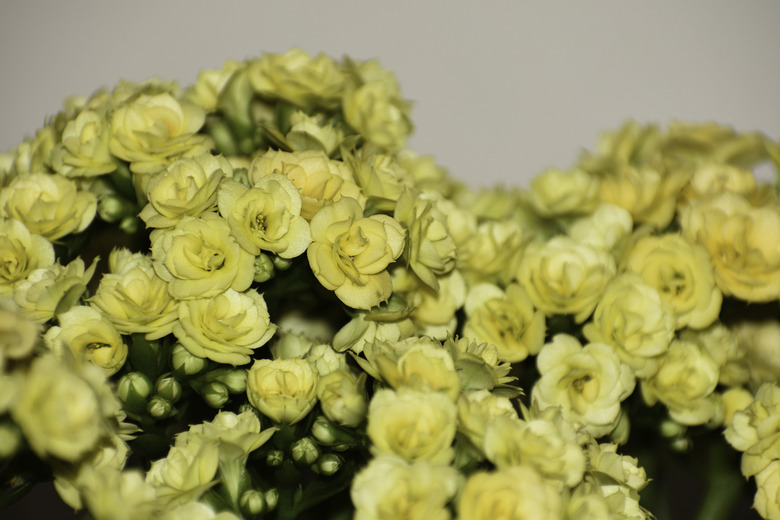How To Care For A Calandiva Plant
We may receive a commission on purchases made from links.
Calandiva plants are a hybrid variety of kalanchoe (Kalanchoe blossfeldiana)that were developed in the Netherlands. Unlike most kalanchoe species, which have only four petals per flower, Calandiva blossoms each have 32 petals. These lovely plants can be grown as perennials in U.S.D.A. plant hardiness zones 10 through 12, where they will bloom for six weeks in late winter and early spring. In cooler climates, they make excellent houseplants that are easy to take care of.
Watering a Calandiva Kalanchoe
Watering a Calandiva Kalanchoe
Allow the soil to dry out 2 to 3 inches deep between waterings then water deeply to thoroughly moisten the root zone. In containers, water until a little excess starts to drain out the bottom holes. Outdoors, add enough water to soak the soil 5 to 6 inches deep.
Avoid overwatering Calandiva kalanchoe, and use a succulent potting mix that allows water to drain easily. This fleshy-stemmed plant is particularly susceptible to root and stem rot if it sits on consistently wet soil. Always plant container-grown plants in pots with drainage holes.
Fertilizing a Calandiva Kalanchoe
Fertilizing a Calandiva Kalanchoe
Fertilize indoor container-grown Calandiva kalanchoe during its active growing season (spring through fall) with a liquid houseplant fertilizer that's diluted to half-strength, following all label directions. Outside, Calandiva needs a single dose of slow-release fertilizer once a year in the spring, applied at half-strength.
Pruning a Calandiva Kalanchoe
Pruning a Calandiva Kalanchoe
Calandiva forms a naturally bushy shape without pruning or shaping. Once the flowers die, pinch or clip them back where they attach to the stem. This step, while not required, makes Calandiva look tidier after flowering. Remember to wash your hands before and after pinching the flowers to minimize the risk of spreading plant diseases.
Potential Pests of Calandiva Kalanchoe
Potential Pests of Calandiva Kalanchoe
Keep Calandiva free of pests by inspecting it weekly and treating problems quickly. Wash off aphids — tiny soft-bodied winged insects — with a gentle stream of water from a spray bottle or water wand. Flick off scale — you'll see raised, wartlike growths on the stems — with your fingers. Keep an eye out for mealybugs, white sap-sucking insects 3/16 inches long and wash them off with a stream of water on first sight.
You can also remove these pests by dabbing them with an alcohol-dipped swab. Wash your hands after dislodging and handling insect-infested plants.
Repeat Blooming for Calandiva Kalanchoe
Repeat Blooming for Calandiva Kalanchoe
You can get a Calandiva kalanchoe plant to flower in winter as long as it's growing inside where you can control the light source. Starting in early fall, keep your plant in complete darkness for 14 hours each night for six full weeks. Two options for restricting light include moving the pots to a pitch-dark room or closet or gently laying a dark-colored cloth over the plant.
Once the buds form, usually within the month, Calandiva will display a full show of flowers by the middle of winter. Indoors, this plant prefers a consistent temperature between 60 and 75 degrees Fahrenheit.
